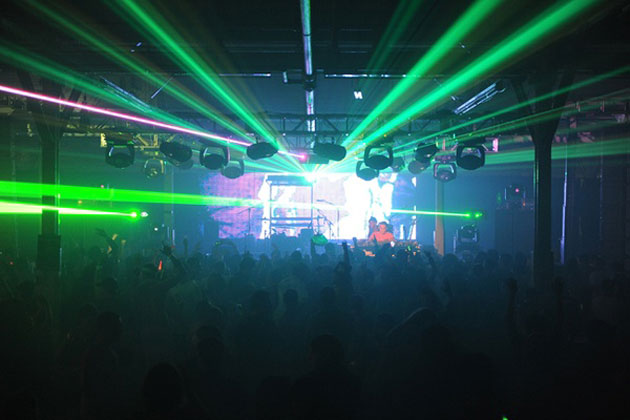 Rave has been used to describe wild parties and burgeoning youth counter-cultures since the 1950s. Starting with Buddy Holly’s “Rave On” and progressing through the 1960s, the die-hard partier has continued to upset the balance of society, even after a minor lull in activity.
Rave has been used to describe wild parties and burgeoning youth counter-cultures since the 1950s. Starting with Buddy Holly’s “Rave On” and progressing through the 1960s, the die-hard partier has continued to upset the balance of society, even after a minor lull in activity.
Lots of folks thought rave was dead after the 1980s and 90s, those sweet decades where the children of hippies began to realize they, too, could do WTF they wanted in their own fashion. In the UK, continental Europe, Canada, Australia, the US and South Africa, the hippies of a new era ushered in a mood of freedom, tolerance, experimentation and new music. Rave enjoyed a relatively short period of privileged status as not only a party, but a subculture. Coming from a completely underground scene, it has gone through being mainstream and illegal, to legitimization in the nightclub scene, to back underground – and sometimes all in a mixed-up order.
For many of us coming of age in the late 1980s-early 1990s, rave was a way of dancing, a genre of music, an attitude, a style all its own – the main pillars were dancing, friendly vibes, drugs, and more dancing. My friend Daryn danced through every weekend in high school, in those really wide raver pants with the many pockets; once, he danced so long he sweated through and absorbed seven hits of acid right through his thigh. But he was okay. 🙂
Earlier on, raves were characterised by acid house and techno music played on huge sound systems and augmented by sophisticated light shows, as well as by their illicit nature. Now, trance, psytrance, dubstep, techno and jungle are cranked out, depending on which party you attend. There’s always been a raver code that tones down tendencies toward anarchy: PLUR – peace, love, unity, respect. That kind of attitude was often carried into the “regular” world by ravers when the culture was at its peak. But of course, any violence that does occur at raves is represented to the public as a travesty and a reason why they should continue to be outlawed.
By the mid-1990s, authorities were sick of rave culture. With the law cracking down on illegal parties everywhere from suburban warehouses to airplane hangars to beaches and fields, the rave scene moved to legitimize somewhat. Rave parties were squeezed into club atmospheres, where the concept still holds great influence.
But going to a nightclub is not the same thing as going to a rave. It’s not only about the music; it’s about setting up an enormous, spontaneous, illegal party. The current attitude has remained one of freedom – it’s a wonder our hippie parents forget the lessons they taught the world about individuality, love and autonomy of choice.
The zeitgeist is still one of freedom. Talking about a colossal party in central London busted from the get-go, but still managing to keep implemented till 4:00am, one commentator said: “There is a self-entitlement with the generation that has grown up on the internet. There is a genuine feeling that if they want to do it, then why can’t they do it? If we want free songs, then why can’t we get free songs? If we want these parties in the centre of London then why don’t we have these parties in the centre of London?”
Texting, wireless and facebook have made it all the more possible for raves to get organized in any city. All you need is the equipment, the mobility and the plan. Then it’s up to your friends. Because the location of a rave is never given out too far in advance, the party always retains the disobedience it needs to really fulfil its mission.
Raves are fun because they emphasize intimacy, losing yourself in the crowd, and empathy. They’re not just a night at the club, they’re a trip. Funnily enough, the term “rave” came to be associated with all things EDM, just like “techno” and “electronica”. Some people lament when the meanings of words are put onto things they weren’t intended for. But really, rave is just about freedom, and so is electronic music. Freedom, the license to create, and the will to dance. All with due respect.




